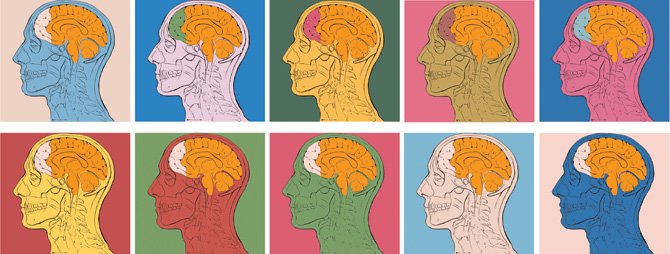Home » Translational Research » Research Highlights » Behavioral Disorders » Here
In this section
A novel molecular basis for schizophrenia
 This image illustrated the cover of the issue of Genomic Research in which Scripps Translational Science Institute investigators report the results of their genomic analysis of schizophrenia.
This image illustrated the cover of the issue of Genomic Research in which Scripps Translational Science Institute investigators report the results of their genomic analysis of schizophrenia.
Complex interactions between genetic and environmental factors are thought to result in abnormalities in central nervous system (CNS) gene expression leading to the manifestation of schizophrenia. While global expression studies have identified alterations in the expression of genes related to myelination, synaptic transmission, metabolism and ubiquitination in the brains of individuals with schizophrenia, not all of these differences have been replicated in every study. In addition, these differences have not been integrated into a compelling and comprehensive biological context.
Scripps Translational Science Institute (STSI) researchers have completed an investigation on the molecular mechanisms in schizophrenia. To characterize these mechanisms, they first performed integrated gene co-expression network analysis on two large microarray-based brain gene expression data sets generated from the prefrontal cortex obtained post-mortem from 101 subjects, 47 of whom had schizophrenia. The remaining 54 served as the normal controls. Gene co-expression network analysis was conducted because it allowed the scientists to identify the function of new genes based on their membership in modules with known biological roles. This approached helped elucidate transcriptome patterns and dysfunction of gene expression at the systems level, digging further into the underlying molecular nature of this disease.
The STSI scientists identified 28 modules of co-expressed genes with functional interpretations in both normal individuals and those with schizophrenia. They detected significant overlap of ‘‘case’’ and ‘control’’ module composition, indicating that extensive differences in underlying molecular connectivity likely do not drive schizophrenia pathology.
When the researchers characterized modules of co-expressed genes according to disease association, cell type specificity and the effects of aging, they found that genes with altered expression in schizophrenia clustered into distinct co-expression networks, and that these were associated primarily with neurons and to a lesser extent astrocytes. They also identified a robust effect of age on gene expression modules that differentiates normal individuals from those with schizophrenia.
The scientists did not detect normal age-related decreases in genes related to CNS developmental processes, including neurite outgrowth, neuronal differentiation and dopamine-related cellular signaling, in individuals with schizophrenia during the aging process.
The results of the STSI researchers’ gene co-expression network analysis illuminated a novel molecular basis for schizophrenia that may prove important to diagnosis, prognosis as well as therapy. Their findings support the “developmental” hypothesis that schizophrenia pathogenesis begins early in life and is associated with a failure of normal decreases in development related gene expression.
Based on their gene co-expression network analysis, STSI scientists hypothesized that at least a proportion of disease pathogenesis results from a failure of normal age-related down-regulation of gene expression related to neuronal development and dopamine related cellular signaling.
STSI researchers reported these findings in Genome Research. The image at the top of this page illustrated the cover of that issue of Genome Research. The image was created by the first author of the paper, Ali Torkamani, Ph.D.
